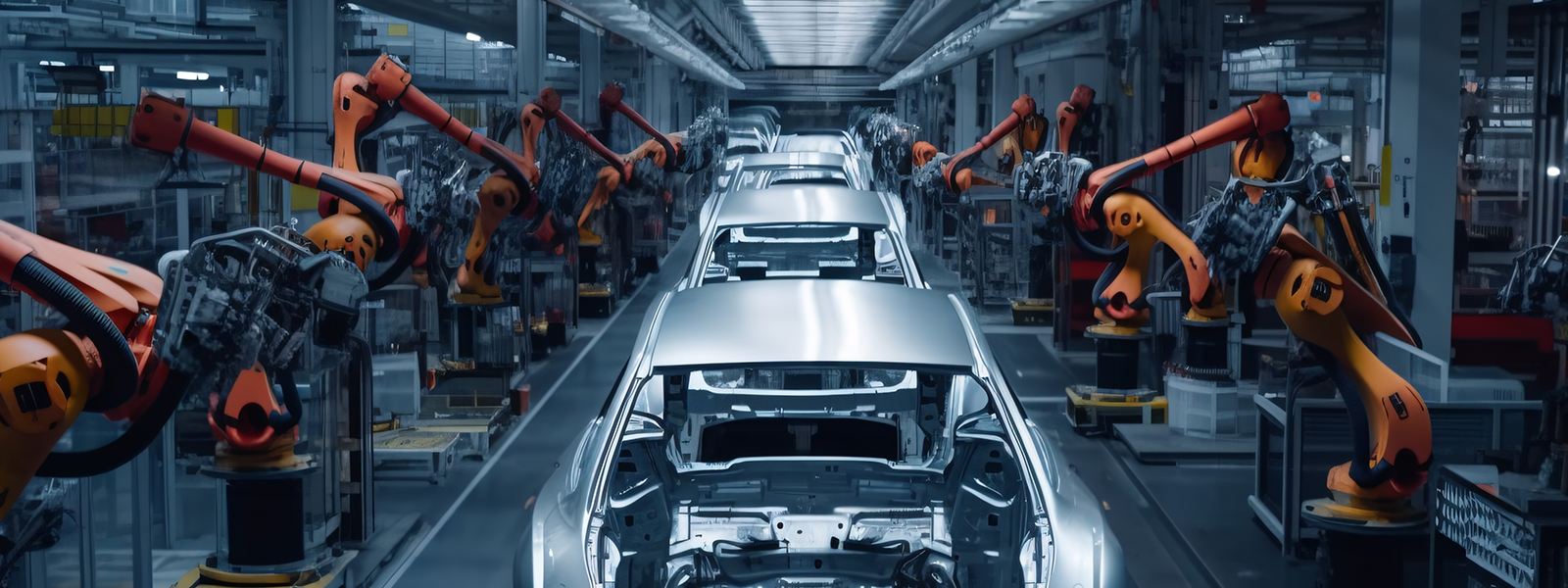The transformative landscape of the oil and gas industry in 2024, driven by AI solutions. Explore groundbreaking trends, digital innovations, and energy forecasts that reshape operations and set the course for a dynamic future in this ever-evolving sector.
The ongoing global discourse on artificial intelligence (AI) and machine learning presents contrasting views - one veering toward a dystopian outlook, fearing dire consequences, while the other depicts a utopian perspective, envisioning AI as a catalyst for progress and economic growth. However, the unfolding reality is likely to converge into a more balanced, methodical integration of AI.
During this debate, the oil and gas sector stands as a clear proponent of process-oriented AI adoption. Accustomed to navigating volatile market cycles, these industries are turning to AI not only for operational predictability but also to align with carbon emission targets.
There are compelling indications and firsthand accounts signaling imminent and substantial transformations. For instance, many global oil and gas entities, whether state-owned or publicly listed, have articulated AI strategies spanning their upstream (exploration and production), downstream (processing and refining), and, where relevant, midstream (pipeline and logistics) operations.
This signifies a significant shift in the energy landscape, where AI solutions are becoming integral to oil and gas operations. It reflects a broader trend within the energy sector towards digital transformation, where AI emerges as a key driver. While the future trajectory of the industry remains subject to fluctuations, AI stands poised to play an increasingly pivotal role in shaping the oil and gas industry's evolution, especially in the foreseeable future, as indicated by the forecasts for oil prices and the anticipated advancements in AI solutions tailored for the sector in 2024.
The Evolution of the Oil & Gas Sector
While exploring the narrative of the oil and gas domain, a saga as diverse and vibrant as the energy it furnishes. Its origins trace back to the 1800s somewhere in Pennsylvania and have since burgeoned into the colossal offshore installations dotting our horizons today. Throughout this journey, technology has been an indispensable ally.
From rudimentary hand-drills to today's cutting-edge seismic imaging, it's been an exhilarating odyssey! However, every compelling narrative encounter twists. Recently, industry has confronted formidable trials, navigated erratic oil prices and engaged in environmental deliberations. These challenges beckon us to think innovatively, transcending conventional boundaries to ensure a future energy landscape that's both brilliant and environmentally conscious.
The Ascendancy of AI in Energy
Remember when AI merely assisted in selecting the next movie or engaged in website banter? It's come a long way since those days!
Now, envision the seasoned realm of oil & gas, steeped in history, clasping hands with this youthful tech prodigy. It's akin to the convergence of a venerable mentor and an enthusiastic protégé. AI heralds a wave of groundbreaking innovations, introducing smarter exploration techniques and safer drilling practices. And the world of oil & gas? It serves as the perfect theater for AI to radiate its brilliance. Collaboratively, they're forging a path toward a more promising and dynamic energy future.
The integration of AI into the oil and gas sector isn't just a passing trend; it signifies a substantial transformation substantiated by significant financial commitments. According to Allied Market Research, the global AI in the oil and gas market attained a value of $2.32 billion in 2021 and is anticipated to soar to an astonishing $7.99 billion by 2031, boasting a growth rate of 13.5% (CAGR). This rapid surge underscores the industry's confidence in AI's potential to revolutionize operations.
Another analysis by Business Wire forecasts the market to reach $3.81 billion by 2025, showcasing a Compound Annual Growth Rate (CAGR) of 10.96%. Moreover, a report from the World Economic Forum underscores that widespread AI adoption within the oil and gas sector could yield a 10–20% reduction in costs, underscoring the profound financial advantages tied to AI integration.
Significant AI Applications in the Oil & Gas Sector
Let’s understand how AI collaborates with the oil & gas domain in various impactful ways.
- Exploration and Drilling - AI serves as a guide, precisely identifying prime drilling spots. Its simulation prowess simplifies the formulation of drilling strategies, consistently prioritizing safety.
- Production Enhancement - Functioning as a digital aid in workshops, AI oversees machinery and recommends proactive maintenance. Its adept handling of data enables us to prioritize pivotal operations seamlessly.
- Supply Chain and Logistics - AI acts as a logistical maestro, optimizing transport and forecasting future requirements. Its efficacy ensures streamlined operations and meticulous resource management.
- Safety Measures and Environmental Preservation - Traditionally, when contemplating the oil and gas realm, environmental preservation might not spring to mind first. However, the emergence of Artificial Intelligence (AI) is reshaping this perspective. AI pioneers' inventive extraction methods that emphasize sustainability, ensuring resource utilization with minimal ecological impact. Moreover, beyond extraction, AI is revolutionizing operational efficiency. By refining processes and fine-tuning energy utilization, AI substantially diminishes the carbon footprint associated with oil and gas activities. In essence, AI doesn't merely propel the industry forward; it steers it toward a greener, more conscientious future.
Remarkable Success Stories in Oil & Gas Sector
- Shell: Shell leverages reinforcement learning to oversee its drilling equipment. By training machine learning models on historical drilling data and real-time inputs such as temperature and pressure, the drilling machinery adapts to changing subsurface conditions. This AI-powered approach results in quicker, more precise drilling outcomes while reducing equipment wear and tear.
- Total S.A. and Google Cloud: Total S.A., a prominent French oil and gas company, partnered with Google Cloud to create AI solutions streamlining subsurface data analysis for exploration and production. This collaboration focuses on interpreting subsurface images from seismic studies through computer vision and automating technical document analysis using natural language processing. These advancements enable Total to explore and evaluate oil and gas fields more efficiently.
- ExxonMobil and MIT: ExxonMobil, in conjunction with the Massachusetts Institute of Technology (MIT), developed AI-equipped robots for ocean exploration. These robots aim to identify natural oil seeps on the seafloor, which contribute significantly to oil entering the oceans. By detecting these seeps, ExxonMobil mitigates exploration risks and reduces harm to marine ecosystems.
Conclusion
AI's applications within the sector align with broader trends across global industries. These encompass AI-driven processes like raw material procurement, inventory management, logistics, operational decision-making, back-office administration, and especially AI-centric cybersecurity, crucial in safeguarding energy infrastructure given the present landscape. Moreover, there's a focused investment trajectory tailored for this sector. It involves channeling capital expenditure towards AI-driven geological assessments, seismic data analysis for hydrocarbon exploration, and surface analysis.
Beyond mere computational analysis, AI-powered robotics are deployed in drilling operations, not just saving time and enhancing efficiencies but also reducing carbon footprint, thus optimizing core operations. A significant investment area in AI pertains to minimizing downtime across oil and gas assets. Predictive analytics, enabled by AI, anticipate potential disruptions, from refinery shutdowns and maintenance schedules to pipeline blockages and well issues. AI algorithms now scrutinize incoming data, flagging anomalies in monitored equipment, catering to varying operational scales.
An aspirational goal for management is the integration of "digital twins," cloud-based replicas mirroring operational facets in upstream, midstream, or downstream processes. These twins rely on schematic models, machine learning, and process response software, generating simulations to anticipate operational needs and prevent mishaps. Industry realists are banking on AI solutions to curtail production costs, enabling more efficient resource utilization, and aiding in meeting emission targets gradually. As investments in AI swell, scrutiny into its potential gains (or setbacks) becomes more acute, promising a closer evaluation of its impact.



